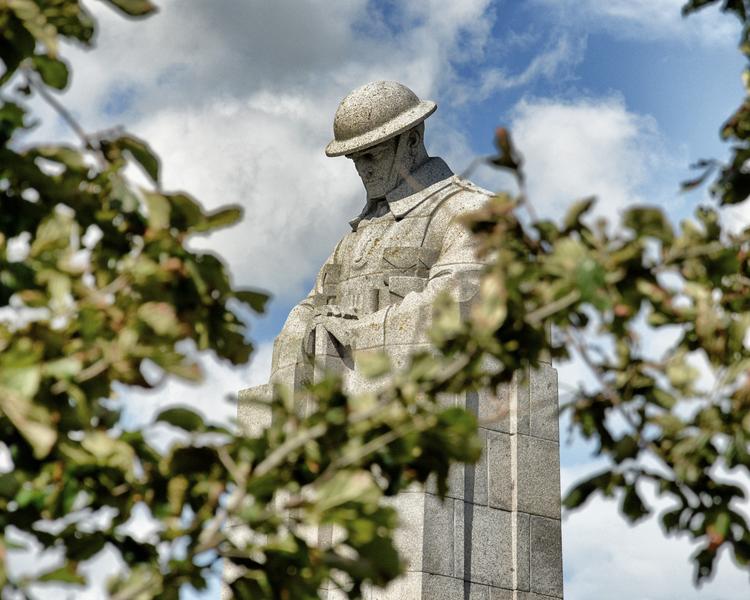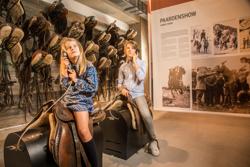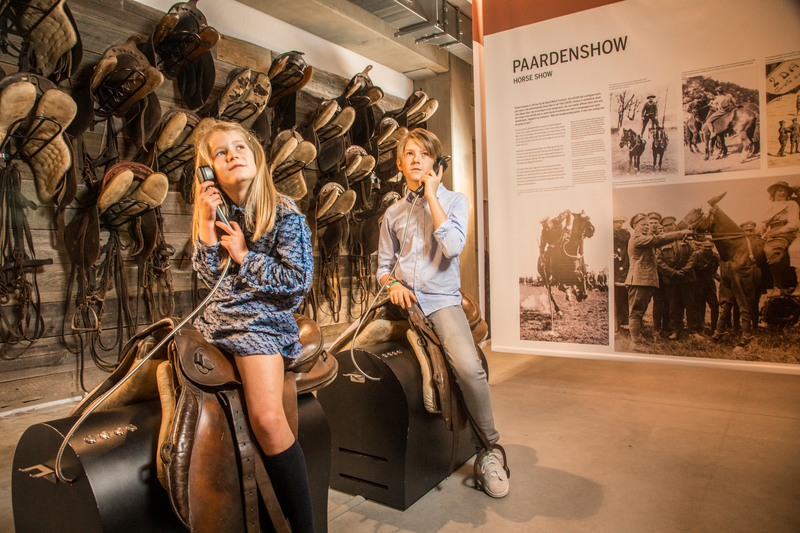Day 1
In Flanders Fields Museum
Grote Markt 34, Ieper
Start the trip with a visit to the hub of the WWI commemoration in Flanders Fields: the In Flanders Fields Museum. Entry is with a white bracelet with a red poppy on it, instead of a ticket. This recently refurbished museum - located in Ypres’ impressive Cloth Hall - focuses on personal stories remembering the story of the invasion and trench war. Take time, to slowly climb the bell-tower to have a look at what were once the battlefields.
Talbot House
Gasthuisstraat 43, Poperinge
After lunch head for Poperinge, a 15 minute drive. It’s here that Talbot House can be found, a large house in the middle of the town, also known as Every Man’s Club, where soldiers of all ranks would visit. The interior is still as it was 100 years ago, with comfy chairs, desks to write letters home and a library (the men had to leave their cap when they wanted a book - this way they were sure the soldiers returned the book before leaving). It’s also somewhere that now, just as the billeted soldiers would have done a hundred years ago, you can relax with a cup of tea! Walk through the house and garden, it’s easy to imagine that this was a safe haven amidst the insanity of the war.
Death cells
Stadhuis, Guido Gezellestraat 1, Poperinge
However, Poperinge was also a place of execution and the execution pole in the courtyard of Poperinge town hall is a painful reminder of it. Shellshocked soldiers, who didn’t know what they were doing and fled, didn’t meet any compassion from their officers. They were court-martialled to death, spent their last night in the jail of the town hall before being shot in the courtyard.
Lijssenthoek Military Cemetery
Boescheepseweg, Poperinge
Some 3 miles from Poperinge, lies the second largest war cemetery of the Commonwealth War Graves Commission, Lijssenthoek, the biggest casualty clearing station of the Ypres salient. Those who didn’t make it, were buried here. Pay a visit to the visitor centre and then walk past a line-up of 1,392 poles, which make up the timeline of the cemetery - a three dimensional bar graph of the more than 10,000 casualties buried here.
Menin Gate
Menenstraat, Ieper
Return to Ypres for a visit to Menin Gate - by far the most famous Commonwealth war memorial in Flanders Fields. On its white walls are engraved the names of 54,896 soldiers whose body was never found (another 34,000 are commemorated at Tyne Cot Memorial in Passchendaele, because the Menin Gate was not big enough to hold all the names). Since 1928, each and every day, apart from the Second World War, the Last Post is played just outside these walls.
The Last Post
Menenstraat, Ieper
At the end of the first day, this experience is very emotive... the four buglers - in the uniform of the voluntary fire-fighters of Ypres - stand in line and the first notes sound like a call. If we can’t call the soldiers back to life, let’s send them “a final farewell at the end of their earthly labours and at the onset of their eternal rest”, as it reads on www.lastpost.be. There are many video clips of the ceremony on YouTube, but as one comment on the videos says: “You must have seen this once in your life. If you are not moved by it, you’re made of concrete.”
Day 2
Heuvelland Visitor Centre
Sint-Laurentiusplein 1, Heuvelland
A good place to start the second day is the Visitor Centre in Heuvelland. It houses a number of permanent WWI exhibitions with a particular focus on the centenary of ‘the Battle of Messines’ or ‘the Battle of the Mines’ as it is also known, looking at the impacts on the landscape and the archaeology of the area.
Irish Peace Park & Tower
Armentierssteenweg, Mesen
Ten minutes driving takes you to the Irish Peace Park, near the town of Messines (Mesen). This traditional Irish round tower commemorates the Catholic and Protestant Irish divisions fighting side by side during the Battle of Messines and is meant as a symbol of reconciliation. Take a moment to read the poems and letters from fellow Irishmen that are sculpted in nine stone tablets and provide inspiration for both today and the future.
Pool of Peace
Kruisstraat, Wijtschate
Drive on about 2 miles to the village of Wijtschate, where in June 1917, the British undermined one of the highest German positions with 91,000 lb. of explosives. The explosion created 19 craters, the Pool of Peace being the largest and most impressive one. From the pool take a tour on foot to the nearby Lone Tree Cemetery and Spanbroekmolen Cemetery.
Bayernwald
Voormezelestraat, Wijtschate
The Bayernwald site lies between Wijtschate and Voormezele and shows how the Germans did very much the same as the allies - dig mines and trenches and build bunkers. It’s important to see the German side too.
The Grave of Major William Redmond
Godtschalckstraat 3, Loker
Fifteen minutes driving, takes you to the ‘lonely grave’ of Major William Redmond at Loker, surrounded by fields. Major ‘Willie’ Redmond was one of the Catholics who fought side by side with the Protestants in Messines. He was the brother of John Redmond, leader of the Irish Parliamentary Party, and himself a most determined advocate of home rule for Ireland. But when his brother made the call to join the British army, he was one of the first to enlist.




